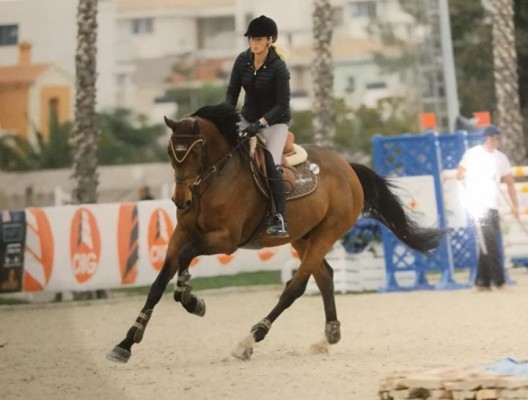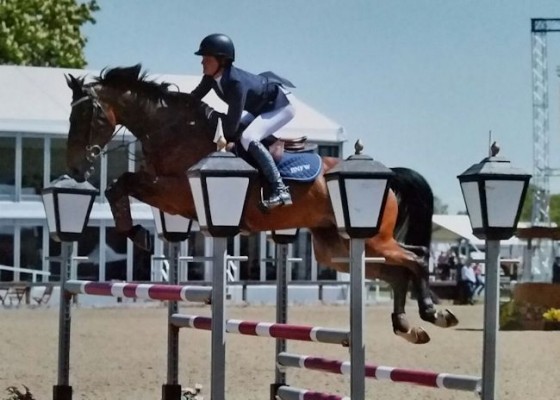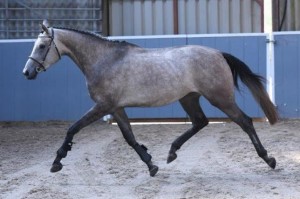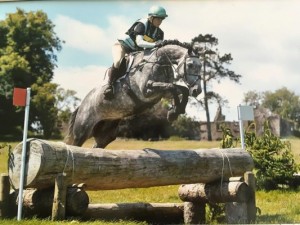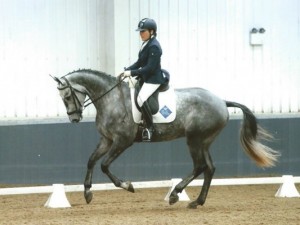




When is a bump just a lump?
Are you looking for a horse for sale? One who has a few miles on the clock; the perfect all rounder who is experienced and safe? Maybe you have seen a few and have noticed that some of them have swellings above the fetlocks on two or four of the legs. There can be many reasons for this and one reason can be hard work which can cause windgall swelling in a horse’s fetlock
What is a windgall? – Windgall is a term used to described the soft swellings often seen just above the fetlock on the forelegs and hind legs of older or hardworking horses, they are not warm to the touch. Windgalls in horses can be seen in many horses in full work – especially in the hind legs. The amount of swelling in a windgall can vary according to the weather – often being more filled in hot temperatures. Horses with hot swelling should be fully investigated by a vet before even considering purchasing.
Although windgalls on a horse’s legs can be an unsightly blemish they do not usually cause lameness – they do are not classed as an unsoundness unless they are causing lameness. Below are descriptions of the different types of windgalls and they will help you decide if you should worry or not. However if you are unsure always consult your veterinary surgeon.
SYNOVIAL FLUID IN EQUINE WINDGALLS – A layman’s science
Windgall swellings on the fetlocks occur when the tendon sheaths above the horse’s fetlocks become filled with synovial fluid.
All horse or pony’s joints contain lubricating synovial fluid within a sac or capsule which prevents the fluid leaking away into the surrounding tissues. In the case of the fetlock, the capsule extends out of the back of the actual joint and forms a pouch above the sesamoid bones behind the cannon bone.
If this pouch of the joint capsule becomes thickened or distended, the resulting swelling on the back of the fetlock is known as an articular windgall.
The tendon sheath, in contrast, has nothing to do with the joint and is best
imagined as a sausage of fluid which envelopes the tendons as they run over the back of the fetlock.
At the upper limit just above the level of the sesamoid bones, this fluid filled sausage lies close to the skin, so that any distension will cause a bulge between the flexor tendons and the suspensory ligament – the tendinous windgall.
TENDINOUS WINDGALL
Of the two types of windgall in horses, the tendinous windgall is the most common and least likely to reflect any real trouble.
Tendinous windgalls are often seen in middle aged horses and ponies who have worked hard – in many cases the swelling actually represents thickening of the membrane lining the sheath rather then free fluid. Tendinous windgalls come and go in some horses and ponies.
ARTICULAR WINDGALLS
Articular windgalls are more likely to be an indicator of genuine disease, as they appear in cases of degenerative joint disease of the fetlock and in certain traumatic conditions.
They are also seen in a great number of ‘normal’ horses who never show any signs of lameness over a protracted period, appearing as firm bulges between the back of the cannon bone and the suspensory ligament.
Many showjumpers, eventers, hunters and ponies develop stiff fetlocks which cannot be passively flexed to the normal extent and which carry articular windgalls all the time.
These horses appear to cope well with these inflexible fetlocks and, although they might pose a dilemma for a veterinary surgeon examining the horse for soundness prior to purchase, the horses go on, season after season.
‘WINDGALLS’ APPEARING BELOW THE FETLOCKS
If a windgall-like swelling appears below the horse’s fetlock, on the back of the pastern, this usually represents a swelling of the lower part of the flexor sheath of the tendons, rather like an upside down tendinous windgall.
Such swellings should be viewed with suspicion, as they may indicate that the sausage of the sheath is being compressed in the middle, making both ends bulge.
Compression is usually due to a contraction of the annular ligament which runs in a thick hand around the back of the fetlock from one sesamoid bone to the other, looping over the tendons.
Should this structure become inflamed or tightened, abnormal pressure will be placed on the tendons and their sheath, restricting the free movement of the tendons over the sesamoids.
This condition, known by a variety of names like Annular Ligament Disease or Desmitis of the Annular Ligament, causes a chronic low grade lameness which may resolve with a period of treamnet and rest, only to return when the horse is brought back into work
